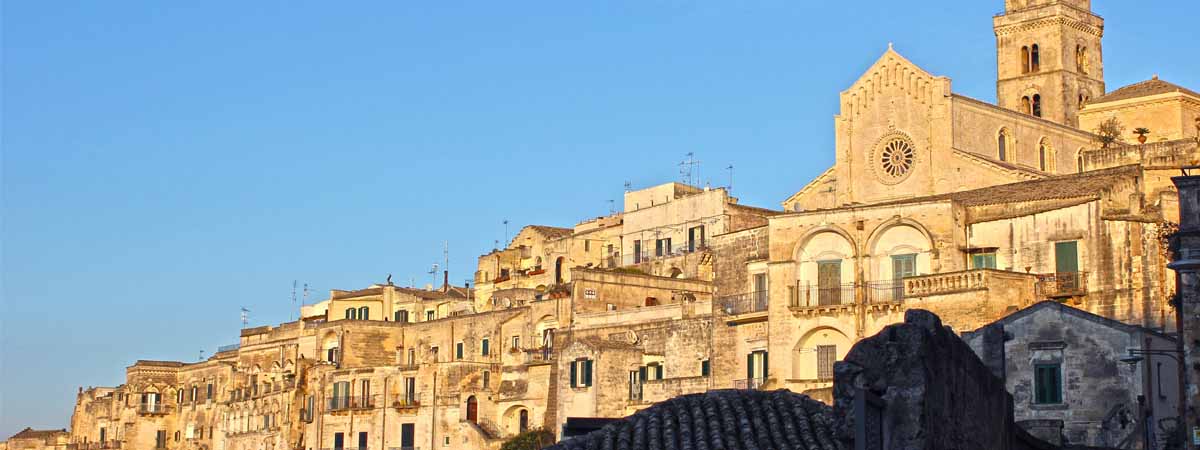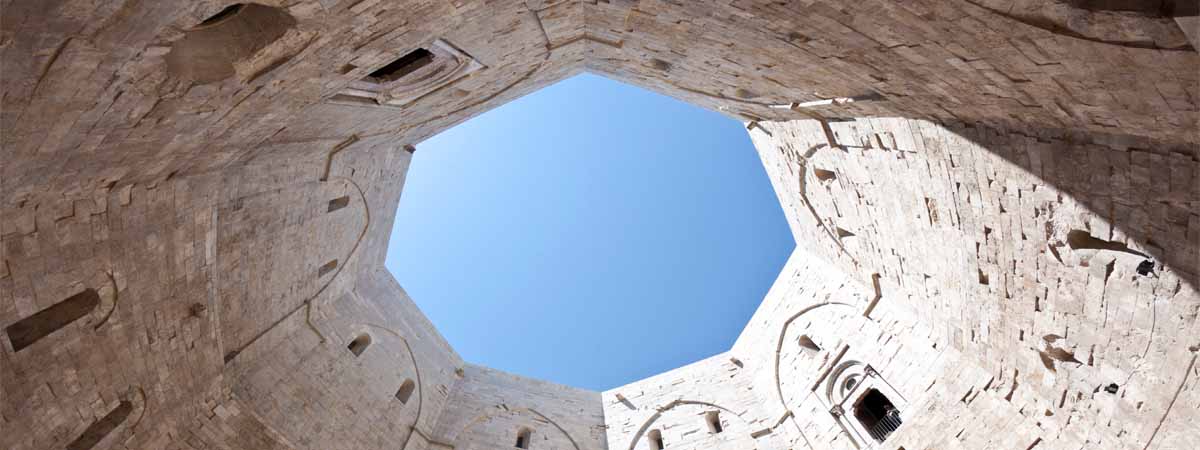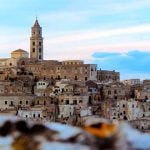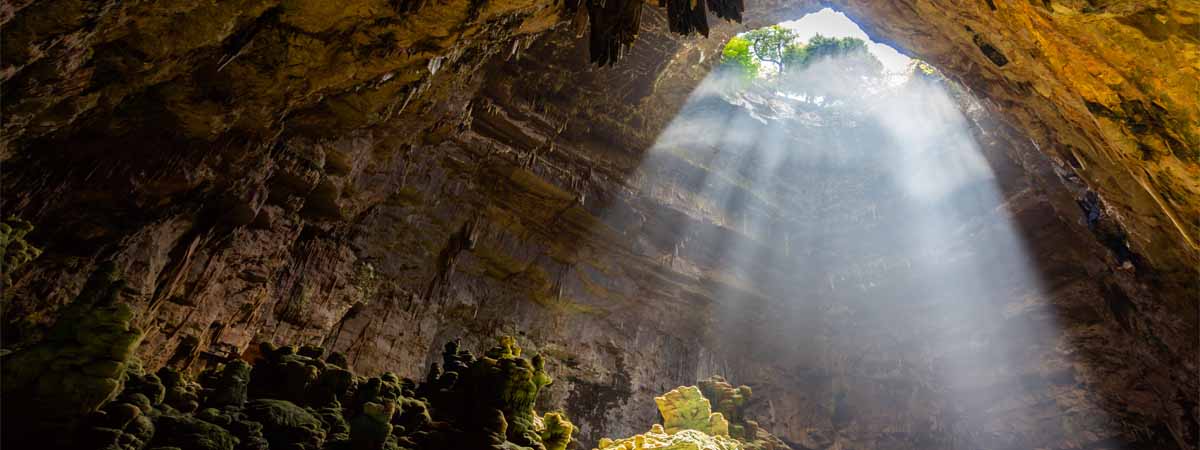In the heart of Southern Italy sits the city of Matera, an enchanting town in the Basilicata region that lights up the inky night sky with the romantic ambiance that Italy is known and loved for. The unique cave dwellings and majestic churches of the city cut into the rocky terrain warmly glow against the stark darkness of the evening, giving the experience a magical effect. To see Matera at any time of day is to witness such aesthetic beauty and striking history, it renders many visitors simply speechless. This unique city steeped in tradition and culture is one of the reasons the Basilicata region was rated number three on the New York Times’ “52 Places to Go in 2018.”
This fascinating and unusual city is the capital of the Province of Matera. However, before earning this distinction, the city was recognized as the capital of the entire region of Basilicata for a time in the seventeenth and eighteenth centuries.
Matera is considered to be one of the oldest continuously inhabited cities in the world, with roots that trace back to tenth millennium B.C. Although the area is thought by historians and archeologists to originally have been settled in the Paleolithic era, the ancient city that more closely resembles what we see today is estimated to have been founded by the Romans in the third century B.C. With ancient connections to centuries past that are still evident today, it is not a surprise that Matera was declared one of the European Capitals of Culture for the year 2019, a distinction shared with one other city, Plovdiv in Bulgaria.
The population of approximately sixty thousand lives amongst modern Matera and the beguiling caves of the Sassi. It is no secret that the Sassi’s hilltop city of rock dwellings is the internationally recognized landmark of Matera. Referred to as Sassi di Matera, the historical center is designated as a World Heritage Site by the United Nations Education Scientific and Cultural Organization (UNESCO).
The Sassi caves were cut so deep into the rock formations, it was known by many as la Città Sotterranea or underground city. Although beautiful even a century ago, the picturesque living quarters literally built into the rocks of Matera were poverty stricken and the area was considered largely uninhabitable during the middle of the twentieth century. Because of poor living conditions, the government moved the Sassi population in the 1950s to more suitable living quarters close by, leaving the village literally desolate. Perhaps the sentiment of that moment is best captured by twentieth century Italian writer and painter Carlo Levi who once said, “Anyone who sees Matera can’t help but be awestruck, so expressive and touching is its sorrowful beauty.”
Since that time, the Sassi has experienced a profound rejuvenation process led by the government and now the city attracts curious travelers from across the globe. While much of the outer shell of the original living quarters and the traditional décor are still mostly intact, the area is now more modernized in conveniences and is home to quaint and traditional restaurants and simple but luxurious lodgings.
Although Matera sits in a less traveled area of the Basilicata region, several modes of nearby transportation are available, with car being the most efficient way to reach the city. Approximately forty miles outside of Matera is an international airport in Bari and the city is connected to several national roads. However, while touring Matera’s historical center, plan to do all of your wandering by foot as you travel narrow alleyways and stairs.
GEOGRAPHY & CLIMATE
Matera is located in a remote corner of Southern Italy, with the city sitting on the side of a grand rocky canyon that has been carved out over the years by the rushing waters of the Gravina River, which is now more of a stream.
While mountains make up more than half of Basilicata’s landscape, Matera sits canyon-side in more of a plateau-like region with karst properties.
The Mediterranean climate of the Adriatic, Ionian, and Tyrrhenian coastlines and mountains in the region help regulate the changing seasons in Matera. The winter months tend to be dry and slightly cool, with temperatures bottoming out around forty degrees Fahrenheit in January. Matera is usually warmest in August with temperatures reaching an average high in the mid-seventies. Rain can become more frequent in early fall.
WHEN IN MATERA
Because the city is literally carved into the rock, most structures in the area have unique and rare architectural qualities. Matera is filled with beautiful Rupestrian churches, some of which have underground tunnels that lead to ancient seventeenth century frescos. One must-see church is the Matera Cathedral, which is built on the ridge that forms the highest point of the city and offers spectacular views via several lookout points.
On the other side of the ravine opposite of Matera, visitors will see dozens of tiny caves carved out of the grass covered hillside. The area is Murgia National Park but is officially known as Parco Regionale Archeologico Storico Naturale delle Chiese Rupestri del Materano, or the Natural Historic Archaeological Regional Park of the Rock Churches of Matera. This area stretches between the towns of Matera and Montescaglioso, both located in the region of Basilicata. In addition to the abundance of small caves, there are a number of unique plant and animal species throughout the park.
For a true picture of how the population lived in the Sassi before relocating in the 1950s, visit Casa Grotta di Vico Solitario, which features a recreated cave dwelling. The average home was rather small with one bed, a tiny kitchen area, and room for the animals. A family’s animals usually stayed inside and dogs often slept with their owners to keep them warm during cold nights. To visit the Casa Grotta is to catch a glimpse of the simple yet fulfilling life of those who dwelled in the Sassi.
Pack your sense of adventure and travel to the rock city of Matera to take in some of the most stunning examples of history, art, and architecture to be found in all of Italy – jaw-dropping panoramas will be waiting around every corner.



Travel Guides
[wudrelated include="1837"]
The Basilicata Region of Italy
[wudrelated include="2736"]
The Cities of Basilicata, Italy
[wudrelated include="4244"]

